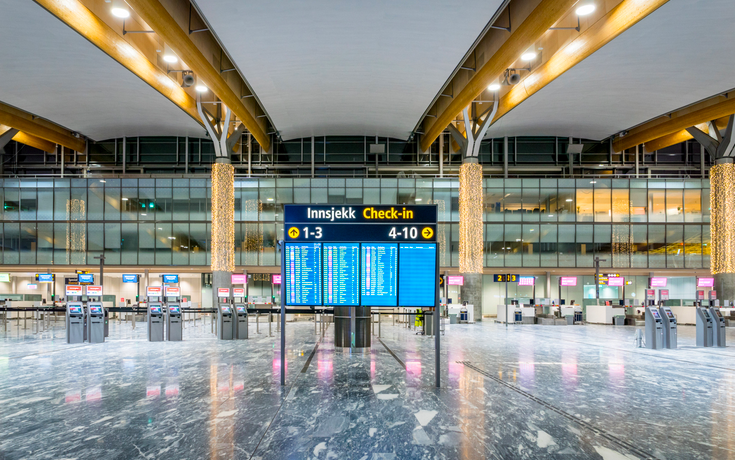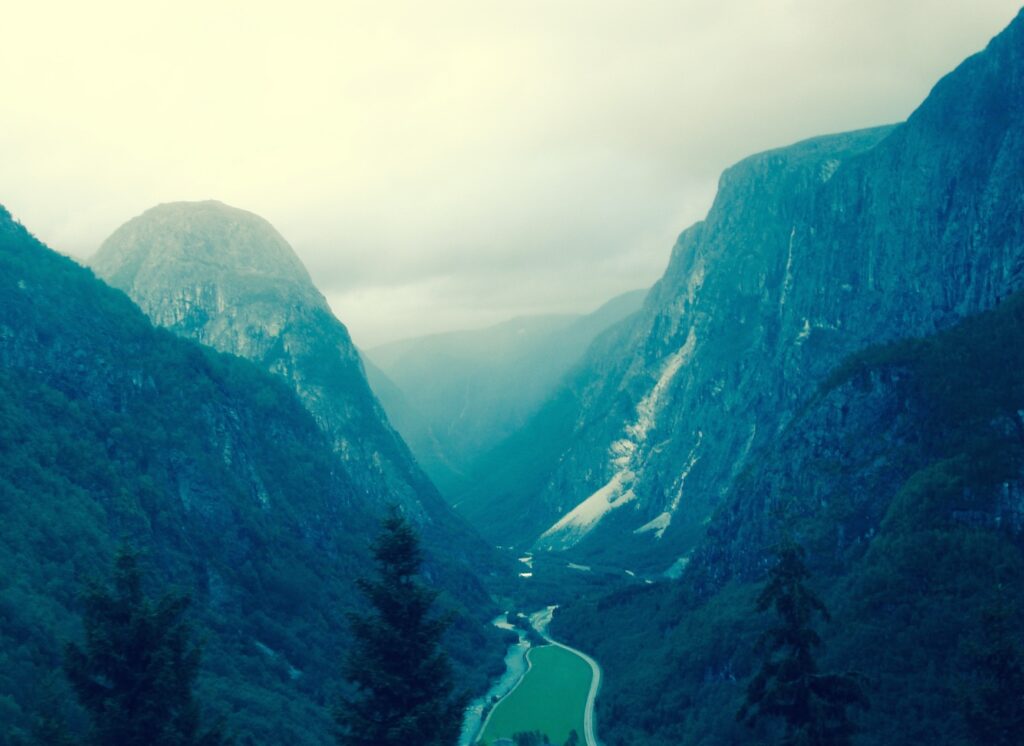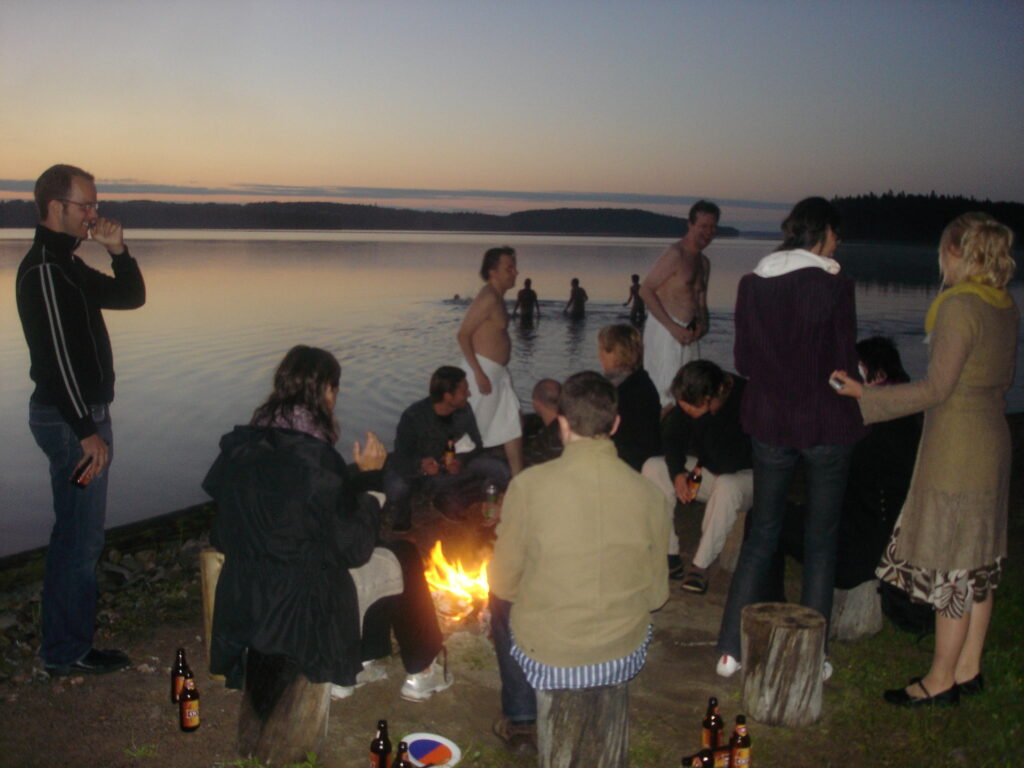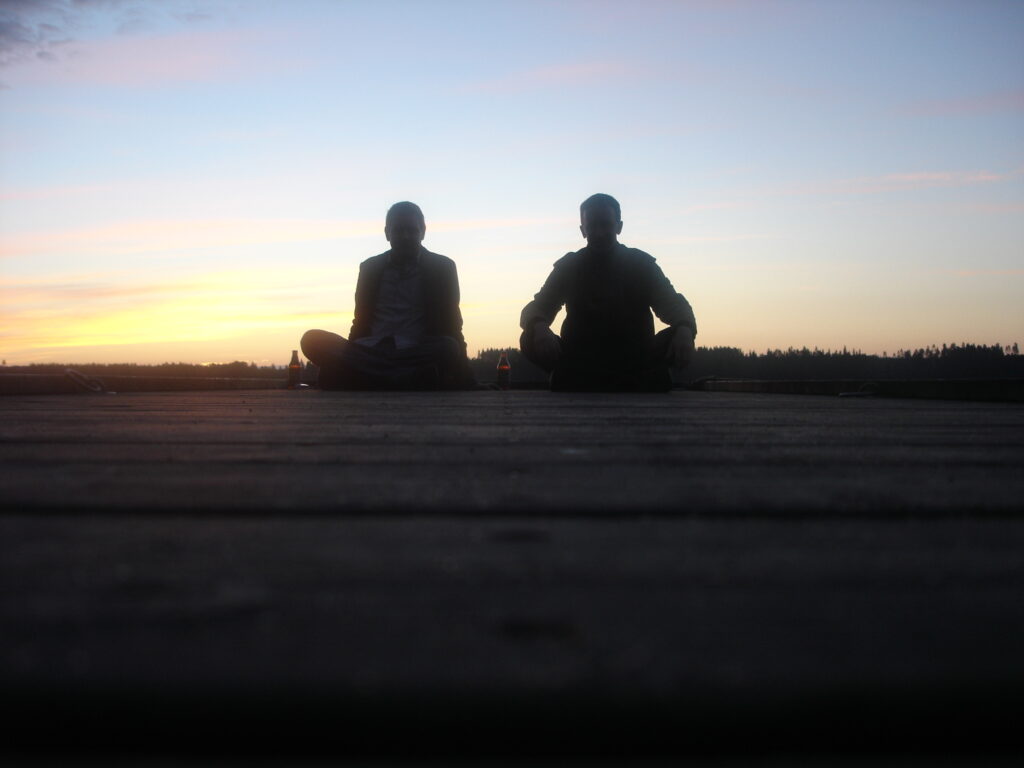An early draft of Chapter 5 of The Northern Silence opened not with an analysis of Sigurd Lewerentz’s Malmö Opera, but of Gardermoen Airport outside Oslo. I realised shortly after writing it that Malmö Opera was a far better fit (for a demonstration of ‘functionalism’) and that there were far too many airports in the book already (Haugesund, Sandane, Tromsø, Helsinki…).
Still, I’ve always had more than a soft spot for Gardermoen. In the old days, before the various extensions post-2010, I’d have put it up there with Norwich Cathedral and the Copenhagen Opera House as an example of total perfection of form – or near enough. So here’s that original opening to Chapter 5, which argues how such a conclusion might be arrived at.
PS: In 2018, I finally got to the ‘old’ Oslo Airport at Fornebu – or what remains of it – when the violinist Eldbjørg Hemsing played a private recital in a residence not far from what was the runway (the area that housed the airport is now residential, but it was clear enough where the runway lay).

One night in October 1998, five hundred truckloads of aviation equipment snaked their way over 60 kilometres of undulating Norwegian terrain in convoy. They were travelling from the Oslo suburb of Fornebu to the satellite town of Gardermoen. By the morning, Norway’s principal passenger aviation hub for the last 49 years had been decommissioned, instantaneously replaced by a brand new structure ready for its first passengers.
Fresh starts like these present rare opportunities. The new airport at Gardermoen was the product of a single, unified vision: an architectural set piece as uncompromising, integral and aspirational as the palace at Versailles. Eight years after the opening of Stansted Airport outside London, Gardermoen proffered a distinctly Nordic take on the new, light-filled, organic aesthetic of large-scale airport architecture that was emerging towards the turn of the century.
Stansted was low-rise: rooted by the pointillist, borderline humdrum rhythm of 36 white steel trees supporting a flat roof. Gudmund Stokke’s altitudinous roof at Gardermoen curved up and then down like an aerofoil, its skeleton a series of imposing wooden struts elevated by totemic concrete pillars. It was an adventure story to Norman Foster’s annual report. When it opened, Gardermoen was the largest laminated wooden structure in the world.
A decade later, I found myself marooned for four hours at Gardermoen courtesy of a cancelled connection. It was the most luxurious of introductions to the building, coming with few time pressures on the day and, more long term, in the chronological sweet-spot between an architectural masterpiece’s birth and the inevitable, steady encroachment of defacing compromises wrought by life, law and enterprise. Arriving from Trondheim and heading for London, I had the privilege of being able to walk what was, then, the building’s full wing-span: from the empty quiet of its domestic west pier, across central atrium to the slightly less empty, less quiet but identical but international east pier.
At the near end of the domestic pier was the airport’s freestanding square chapel in slatted wood – a church within a cathedral, pierced by strange, double-filtered light. (It has since been removed and replaced with a shopping outlet). Huge, similarly slatted pods of offices and restaurants hung in the gigantic forest-clearing-like atrium between the two piers, translucent organs floating beneath a sky-like roof. The impression was of all the space in the world, conceived to calm and aerated the frenetic, time-dependent activity of negotiating one’s way onto an aeroplane.
Even the Duty Free shop in arrivals had a monochrome minimalist beauty: bottles of liquids taxonomically arranged in front of more glass walls, behind which escalator mechanics churned inside perspex casing at 45-degree angles. Underneath it all was a railway station that replicated the entire structure in miniature – a minor celebration of the very same materials, shapes and formal relationships. I always thought of this railway station as equivalent to the positif section of a baroque pipe organ that hangs from the bigger casework, a larger version of itself.

Leaving Oslo in the years that followed, I would always try to get to Gardermoen early. There was something tranquil about the place and to some extent there still is – embraced as it is by as much nature as possible for a facility serving an unnatural activity. Its granite and wood, its pervasive light, the hint of the surrounding hills and trees – all nurtured a deep if transient satisfaction in me. I even wrote a love letter to the building in its own erstwhile in-house glossy magazine, 360° Oslo.
In the old days, sitting at a sections of glass wall overlooking the apron was like getting a box seat at a silent, slow motion ballet danced by aircraft. Rather than pumping chart music into public spaces as at Stansted, Gardermoen’s parent company Avinor used to pipe the sound of flowing water and birdsong into its buildings, and at volume levels bordering on the subconscious. It had as soothing an effect as the structure’s repeating patterns and stringent symmetry (before the post-2010 alterations, anyway).
To most people, Gardermoen was and remains just another faceless airport – a palace of procedure, a building to exit, one way or another, as quickly as possible. For those with a deeper interest in design and culture, it was a monument made interesting by its combination of international developments with distinctly local accents. It celebrated the wild and beautiful landscape outside, replicating it inside with its profusion of wood and granite and its dramatic soaring roof. It harboured natural light according to the sun’s distinctive low position in the sky at Oslo’s latitude. It strove for the utmost clarity of form, avoiding unnecessary hierarchies and facilitating the most intuitive of ‘user journeys’. It extended a long Nordic tradition of furnishing airports, like other once-in-a-generation buildings, with bespoke furniture and fittings that would never be manufactured again. A more Scandinavian building it is hard to think of. And what a beautiful way that is to greet visitors to a country, or bid farewell to them.


